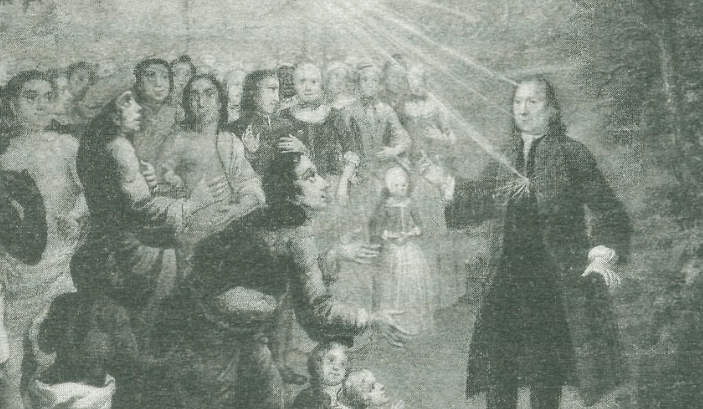Who was Nicolaus Zinzendorf? Information on German religious leader Nicolaus Zinzendorf biography, life story, works and leadership.

Source : wikipedia.org
Nicolaus Zinzendorf; German religious leader: b. Dresden, Saxony, May 26, 1700; d. Herrnhut, May 9, 1760. His parents were devoted to Pietism, and Philipp Jakob Spener, founder of that movement, was his godfather. He was educated at the University of Wittenberg. By birth and training he was fitted to serve as a courier, but his deep religious vocation made him unhappy in a minor post at the court of the king of Saxony in Dresden. He came to his life work almost accidentally when in 1722 he permitted some members of the Moravian sect, fleeing from persecution in Austria, to settle on his estate near Dresden. Their small village, which was given the name Herrnhut (the Lord’s Watch), occupied more and more of his time, and in 1727 he resigned his court place and devoted himself to this community as a spiritual father.
Zinzendorf’s most characteristic theological emphases were upon a personal conversion to Christ and a constant close personal fellowship with Him. These principles can be seen in his plans for the “brotherhood” at Herrnhut. Zin-zendorf insisted that its members take the sacrament from the Lutheran parish priest, but the spirit of the group had little in common with Lutheranism. The whole community was divided into “choirs” determined by the age, sex, and marital status of the members, and it has been described as a monastic system based upon the family.
In 1734 Zinzendorf was ordained a Lutheran minister, possibly believing that this would silence some of the criticism that was being directed against him. Nevertheless, in 1736 he was exiled from Saxony because the authorities feared that he was creating a sectarian denomination on his estate. In 1737 he was ordained a bishop of the Moravian Church. The Saxon authorities did not repeal his banishment until 1747, and Zinzendorf spent the rest of his life moving among the various Moravian settlements and mission stations. He spent the whole of 1742 in Pennsylvania, where he was responsible for naming and establishing the Moravian community of Bethlehem. He also lived for some time (1749-1755) in England.
On his return from America, Zinzendorf began to stress the need for a childlike response to Christ. Sentimentality, the greatest danger in Pietism, turned this teaching into an unfortunate episode known as “the sifting period,” which was marked by some extravagent tendencies. This episode, though short lived, was not forgotten by Zinzendorf’s opponents and remained a sorrowful memory for the count himself.
Zinzendorf wrote hundreds of hymns, many of which are still used widely outside the Moravian Church. His main achievement was to revive the scattered and virtually extinguished Moravian Church, to mold it into a brotherhood based on an evangelical pietistic theology, and to give it a worldwide vision for missionary service.